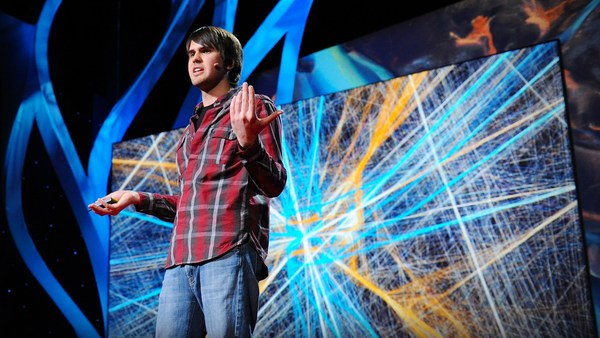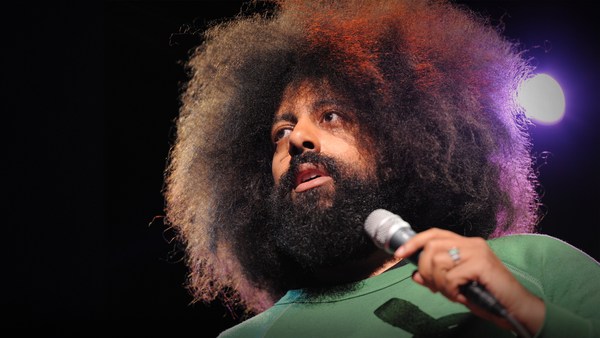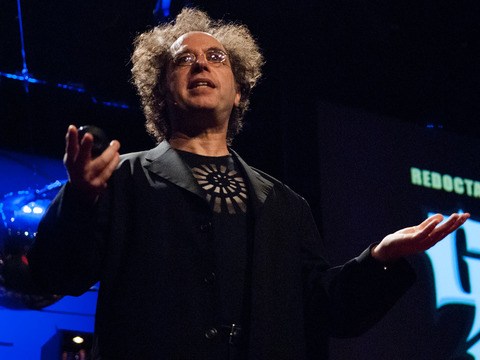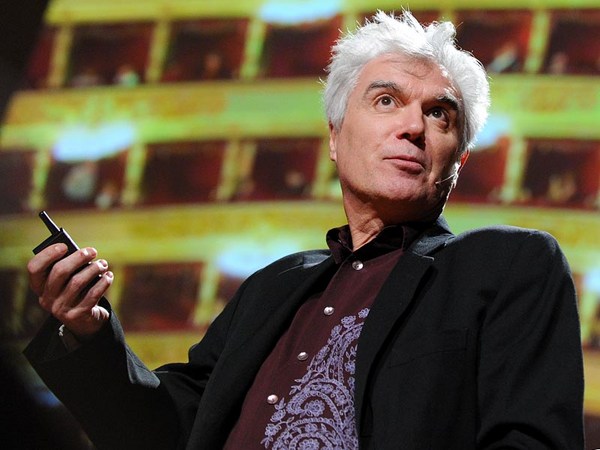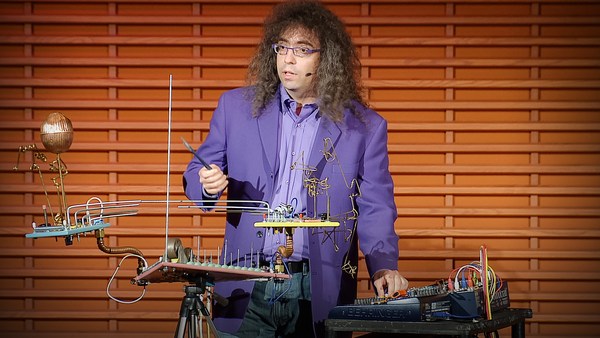(Music) For any of you who have visited or lived in New York City, these shots might start to look familiar. This is Central Park, one of the most beautifully designed public spaces in America. But to anyone who hasn't visited, these images can't really fully convey. To really understand Central Park, you have to physically be there. Well, the same is true of the music, which my brother and I composed and mapped specifically for Central Park. (Music)
I'd like to talk to you today a little bit about the work that my brother Hays and I are doing -- That's us there. That's both of us actually — specifically about a concept that we've been developing over the last few years, this idea of location-aware music.
Now, my brother and I, we're musicians and music producers. We've been working together since, well, since we were kids, really. But recently, we've become more and more interested in projects where art and technology intersect, from creating sight-specific audio and video installation to engineering interactive concerts.
But today I want to focus on this concept of composition for physical space.
But before I go too much further into that, let me tell you a little bit about how we got started with this idea. My brother and I were living in New York City when the artists Christo and Jeanne-Claude did their temporary installation, The Gates, in Central Park. Hundreds of these brightly-colored sculptures decorated the park for a number of weeks, and unlike work that's exhibited in a more neutral space, like on the walls of a gallery or a museum, this was work that was really in dialogue with this place, and in a lot of ways, The Gates was really a celebration of Frederick Olmsted's incredible design. This was an experience that stayed with us for a long time, and years later, my brother and I moved back to Washington, D.C., and we started to ask the question, would it be possible, in the same way that The Gates responded to the physical layout of the park, to compose music for a landscape? Which brought us to this.
(Music)
On Memorial Day, we released "The National Mall," a location-aware album released exclusively as a mobile app that uses the device's built-in GPS functionality to sonically map the entire park in our hometown of Washington, D.C. Hundreds of musical segments are geo-tagged throughout the entire park so that as a listener traverses the landscape, a musical score is actually unfolding around them. So this is not a playlist or a list of songs intended for the park, but rather an array of distinct melodies and rhythms that fit together like pieces of a puzzle and blend seamlessly based on a listener's chosen trajectory. So think of this as a choose-your-own-adventure of an album.
Let's take a closer look. Let's look at one example here. So using the app, as you make your way towards the grounds surrounding the Washington Monument, you hear the sounds of instruments warming up, which then gives way to the sound of a mellotron spelling out a very simple melody. This is then joined by the sound of sweeping violins. Keep walking, and a full choir joins in, until you finally reach the top of the hill and you're hearing the sound of drums and fireworks and all sorts of musical craziness, as if all of these sounds are radiating out from this giant obelisk that punctuates the center of the park. But were you to walk in the opposite direction, this entire sequence happens in reverse. And were you to actually exit the perimeter of the park, the music would fade to silence, and the play button would disappear.
We're sometimes contacted by people in other parts of the world who can't travel to the United States, but would like to hear this record. Well, unlike a normal album, we haven't been able to accommodate this request. When they ask for a C.D. or an MP3 version, we just can't make that happen, and the reason is because this isn't a promotional app or a game to promote or accompany the release of a traditional record. In this case, the app is the work itself, and the architecture of the landscape is intrinsic to the listening experience.
Six months later, we did a location-aware album for Central Park, a park that is over two times the size of the National Mall, with music spanning from the Sheep's Meadow to the Ramble to the Reservoir.
Currently, my brother and I are working on projects all over the country, but last spring we started a project, here actually at Stanford's Experimental Media Art Department, where we're creating our largest location-aware album to date, one that will span the entirety of Highway 1 here on the Pacific Coast.
But what we're doing, integrating GPS with music, is really just one idea. But it speaks to a larger vision for a music industry that's sometimes struggled to find its footing in this digital age, that they begin to see these new technologies not simply as ways of adding bells and whistles to an existing model, but to dream up entirely new ways for people to interact with and experience music.
Thank you.
(Applause)
